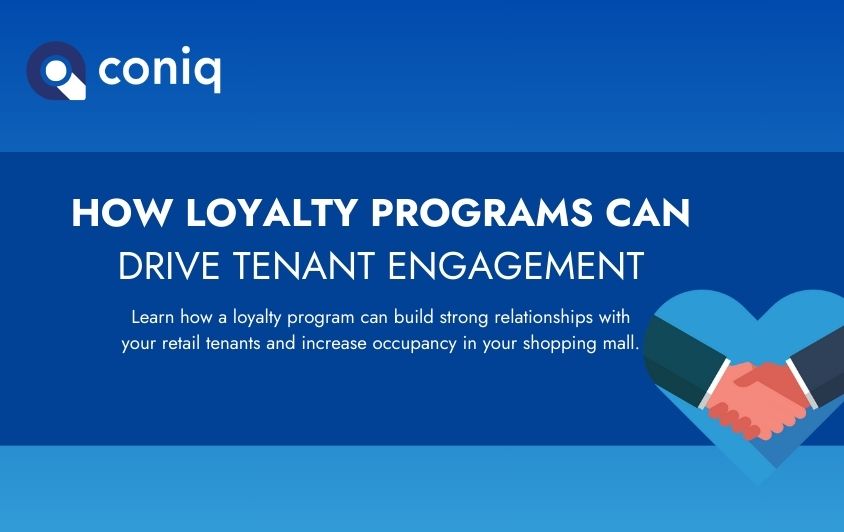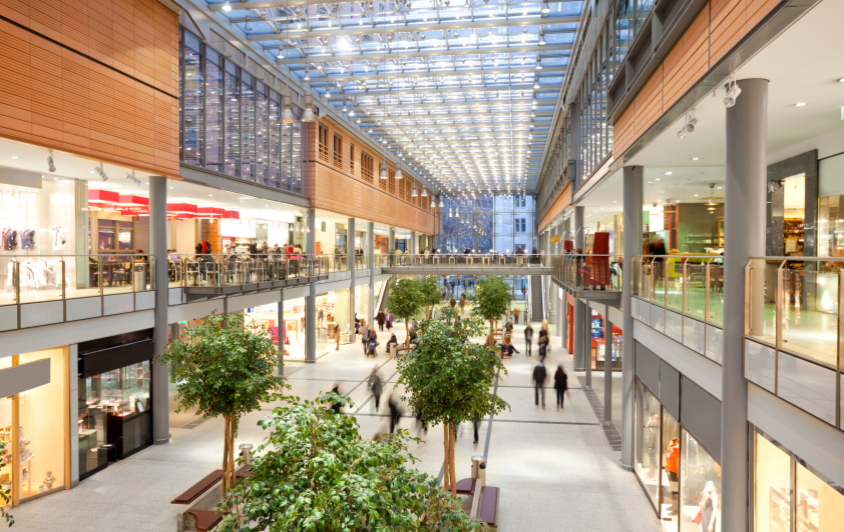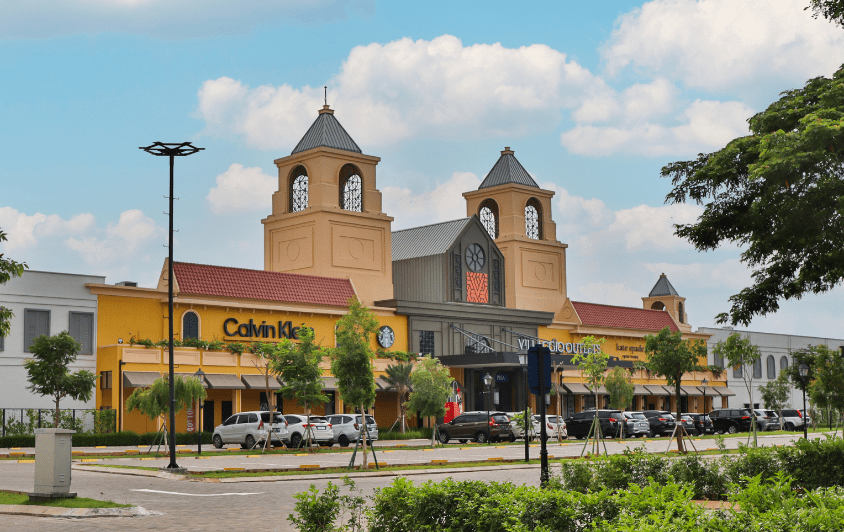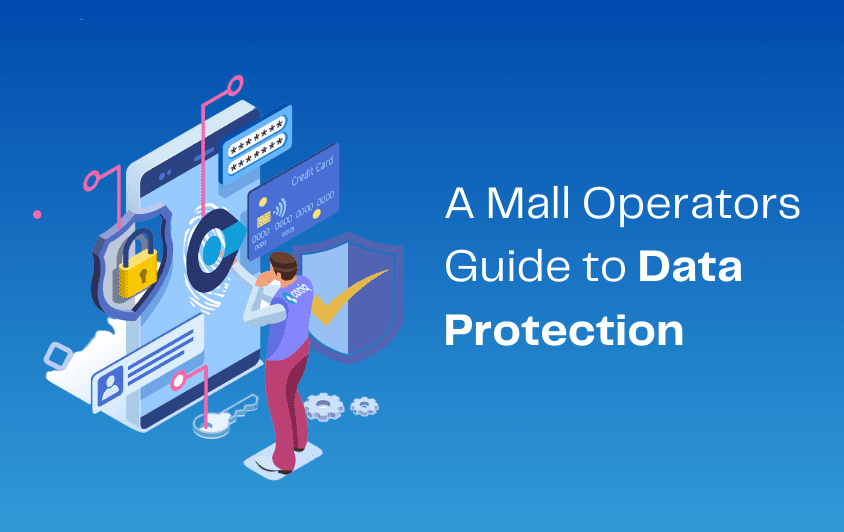How loyalty programs can increase occupancy in your shopping mall
In 2021, there was a significant milestone, marking the first time in several years that store openings in the US outnumbered store closures. This positive shift can be attributed to a change in mindset among property owners. Mall operators have moved away from a siloed approach to mall management, opting instead for a unified concept that treats the mall as a community, working together to enhance the performance of all shareholders.
Establishing strong relationships with retailers is crucial for driving occupancy in your shopping mall. This is because engaged tenants are more likely to adhere to rent payments and comply with community rules and regulations. This, in turn, results in decreased tenant turnover and reduced maintenance costs for landlords—a mutually beneficial outcome.
A customer loyalty program can be an essential tool to drive tenant engagement and bring value to your retailers.
How can a customer loyalty program engage your retail tenants?
Landlord and tenant relationships, although traditionally transactional, have changed over the years. In today’s demanding and competitive market, landlords face the challenge of demonstrating their physical merit to stand out.
For retail brands, key performance indicators (KPIs) such as footfall, expenditure, and the delivery of seamless customer experiences are crucial for establishing a significant competitive edge and ensuring shopper satisfaction.
However, developing an effective omnichannel strategy that seamlessly connects a shopper’s journey across multiple brands and touchpoints is a complex task. This is where a loyalty program becomes an invaluable asset, facilitating the connection of various elements within a single unified platform.
So, what can loyalty offer your retail tenants:
- A database of communicable shoppers
- Effective processes for submitting offers
- First-party data, including insights into customer preferences
- Support for marketing campaigns
- Understand customer behaviors (outside of their brand)
- Insight into their share of wallet within the mall
- Understanding brand performance within their category
- Target shoppers using segmentation and engagement tools
- Communicate with shoppers in real-time
- Attract new customers to your brand who do not typically engage with you
- Utilization of geo-fence capabilities
- Streamlining customer experience through card-linking and receipt-scanning technologies
- Tailored reporting and analytics tools for performance tracking
The implementation of a loyalty program can have a substantial impact on the value you provide your retailers. Not only can it connect a customer journey across multiple touchpoints, creating a better customer experience, but it can also help retailers attract new customers. The outcome? Increased footfall and spend for both the shopping mall and the retailer.
Find out more about how you can drive tenant engagement through actionable customer insights.
How loyalty functions can help your retailers
To make a shopping mall more attractive to customers, it should provide distinctive experiences and dynamic retail options that deliver the sought-after ‘destination experience’ customers want. Ideally, a center should feature a diverse array of retailers, including food and beverage outlets, clothing brands, and entertainment facilities. The greater the variety in your program and the more brands involved, the higher the value you offer to your shoppers!
The greater the variety in your program and the more brands involved, the higher the value you provide to your shoppers. However, fostering customer engagement goes beyond merely offering a wide range of brands at your shopping mall.
Loyalty programs emerge as a powerful tool for brands to not only reach new customers but also gain deeper insights into their preferences and behaviors.
Here are examples of loyalty functions that can be implemented:
Examples of loyalty functions:
- Point of sale (POS) integration – Each transaction made at the till feeds into the Coniq platform
- POS Scanners – Enable shoppers to effortlessly earn and redeem points
- Receipt scanning– Direct insights into purchasing habits and average transaction value (ATV)
- Geo-fencing – Build virtual perimeters and trigger targetted communication
- Personalization – More data means deeper personalization initiatives
- Direct communication – Communicate with shoppers in real time via their loyalty app
- Gamification – Create fun experiences for customers, leveraging loyalty campaigns to enhance engagement and satisfaction
- Offers and discounts – Showcase your offers to a broader audience, utilizing mall marketing initiatives to highlight your store and attract more customers.
Leverage new data points and connect with shoppers
We understand that your retailers have an in-depth understanding of their shoppers. Many of them likely have their own loyalty programs. However, a mall-wide program can complement existing initiatives by bridging the gap for shoppers. No need for multiple app downloads or navigating through various processes to redeem rewards. Instead, discover offers and discounts from multiple brands in one convenient place. Accumulate points for shopping across different brands and conveniently store them in one account. Additionally, customers can simplify engagement by linking their debit cards to the loyalty account for a frictionless experience.
Implementing a loyalty program allows you to gather comprehensive data on a customer’s entire journey – their preferences, habits over time, and spending power. The value of sharing this information is substantial. For example, giving your retail tenants the ability to track sales growth, view the number of returning customers, and measure transactions made within specific spend ranges. These are all tools that can help your tenants enhance their in-store experiences, and create long-term engagement strategies.
Benefit from ongoing retailer engagement
Of course, maintaining tenant relations is a big (and sometimes delicate) job. Many loyalty providers often have dedicated teams to assist brands with onboarding and support. These services can include continuous training to increase tenant adoption and implementation. This ensures that in-store teams understand how to use technical tools (such as scanners.) Loyalty providers can also help support retailers with submitting and activating offers, understanding performance insights and even offer recommendations to optimize customer engagement strategies.
In conclusion, loyalty programs are a valuable tool for building stronger relationships between landlords and tenants within shopping malls. By providing retailers with access to previously untapped data points, a streamlined approach to attracting new customers, and enhanced tools for fostering customer engagement, loyalty programs become instrumental in forging successful partnerships for better retail management.
Find out more about How To Get Retailers To Participate In Your Shopping Mall Loyalty Program.






